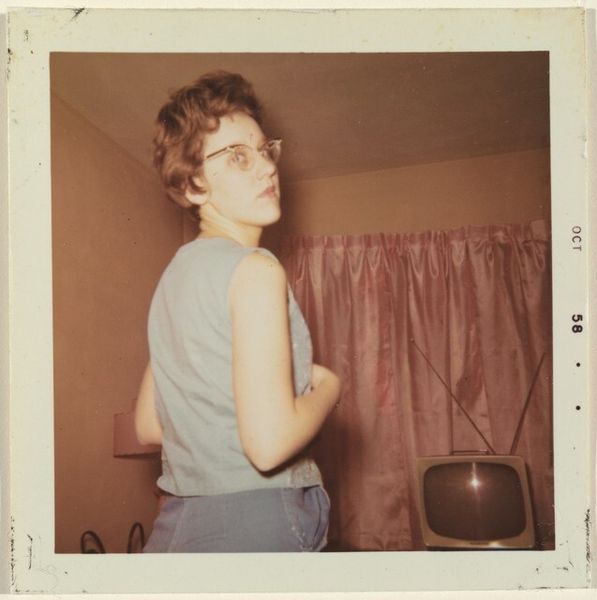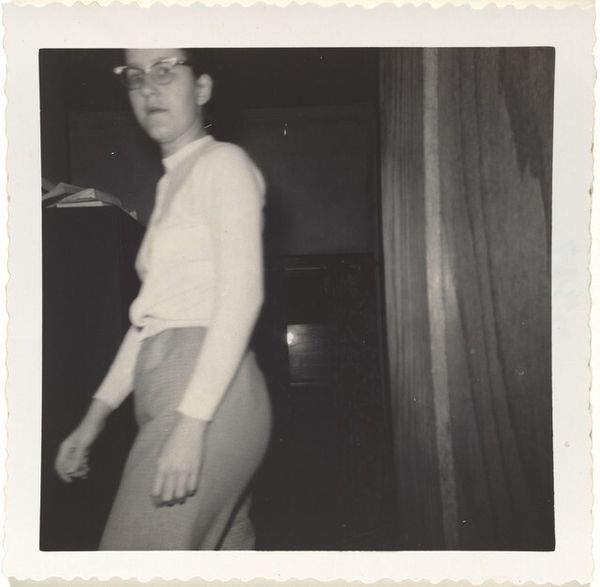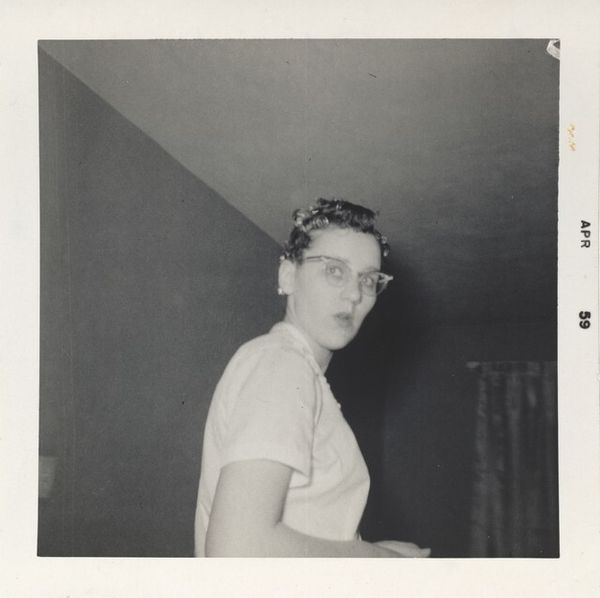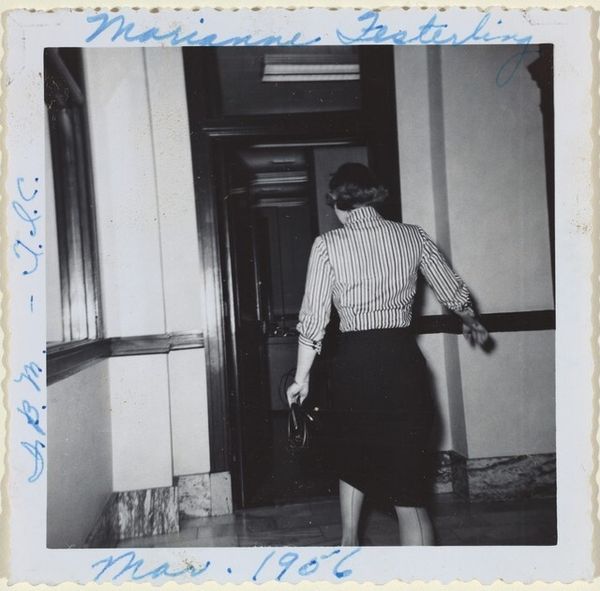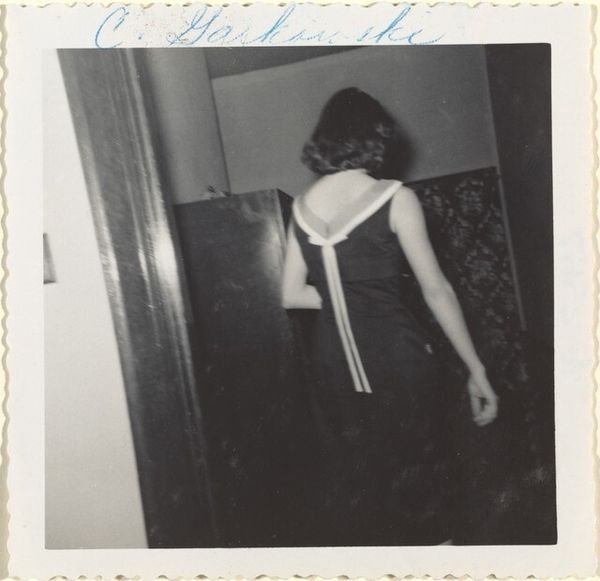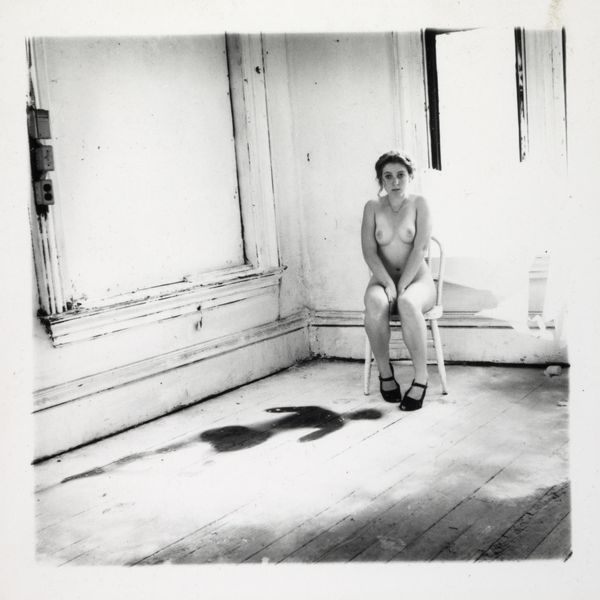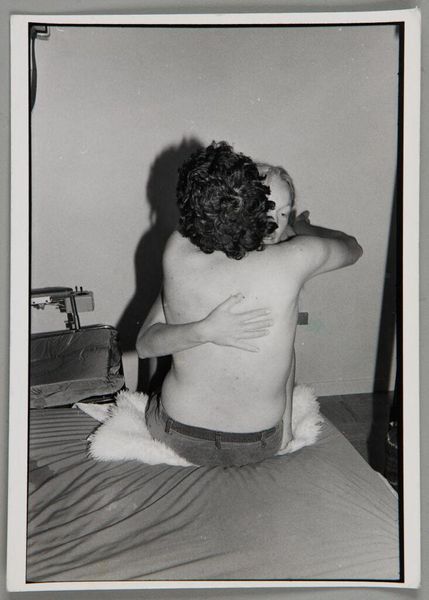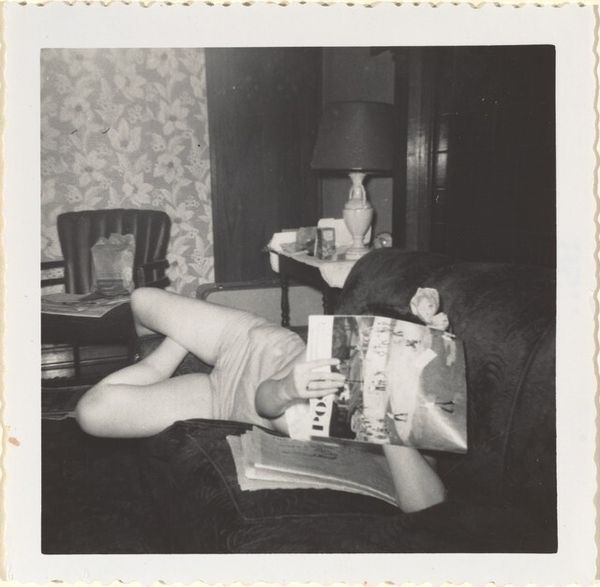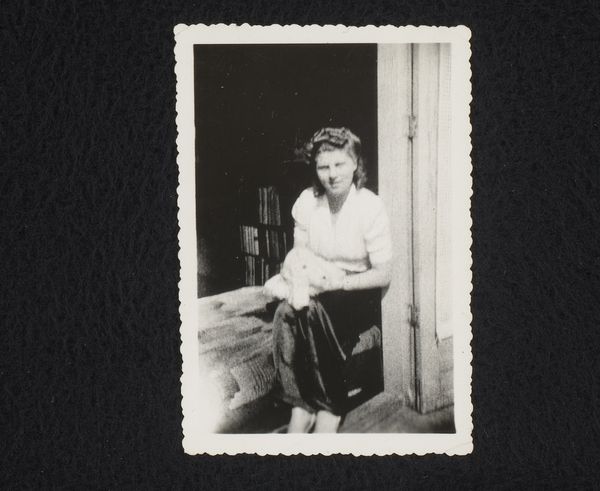
photography
#
portrait
#
photography
#
watercolor
#
realism
Dimensions: image: 7.6 x 7.8 cm (3 x 3 1/16 in.) sheet: 8.8 x 9 cm (3 7/16 x 3 9/16 in.)
Copyright: National Gallery of Art: CC0 1.0
Curator: "Carol Clements T.L.C. File Room," a photographic print created in 1956. What do you make of it? Editor: She looks a little exasperated, doesn’t she? Like she’s been filing all day and just found one that was horribly misfiled. You know, the universal ‘I can’t believe this’ gesture of hand to forehead. Curator: That's an interesting starting point, this feeling of "exasperation." One thing to consider is the labor context of the 1950s, where the clerical workforce, largely composed of women, played a vital role in expanding the burgeoning post-war economy. We have Carol Clements here in what's designated her 'File Room,' likely navigating bureaucratic systems and societal expectations that constrained women in limited professional roles. Editor: It does feel staged somehow, even though it has the texture of a found photograph, this casualness, frozen by time. It also appears there is added hand-coloring on the photographic print. What story is she telling with the additions? Is the addition supposed to be T.L.C.? I wonder. I think a portrait can freeze more than a moment; it captures an imagined truth too, right? Curator: Yes, and consider this image situated in the intersectional dynamics of the workplace, especially how gender and labor are being negotiated. Was the photographer of the photo a man? I do think she is "performing" a role of being a dutiful secretary and competent worker while perhaps signaling boredom or even a hint of frustration. And to note the photo also gives this photograph an interesting interplay between performance and document. Editor: She has been fixed in this pose; frozen in time forever; as this young woman. I think the most telling parts are on the edge where you can still see the artist at work. A lot of feeling resonates from its realness, even though "reality" has been played with. Curator: Absolutely. It is not just a depiction; it's a layered commentary on the intersections of identity and labor. These additions allow us to look back to see what societal impositions might have been expected, too. Editor: Makes me wonder about the rooms we are filing away in right now.
Comments
No comments
Be the first to comment and join the conversation on the ultimate creative platform.
